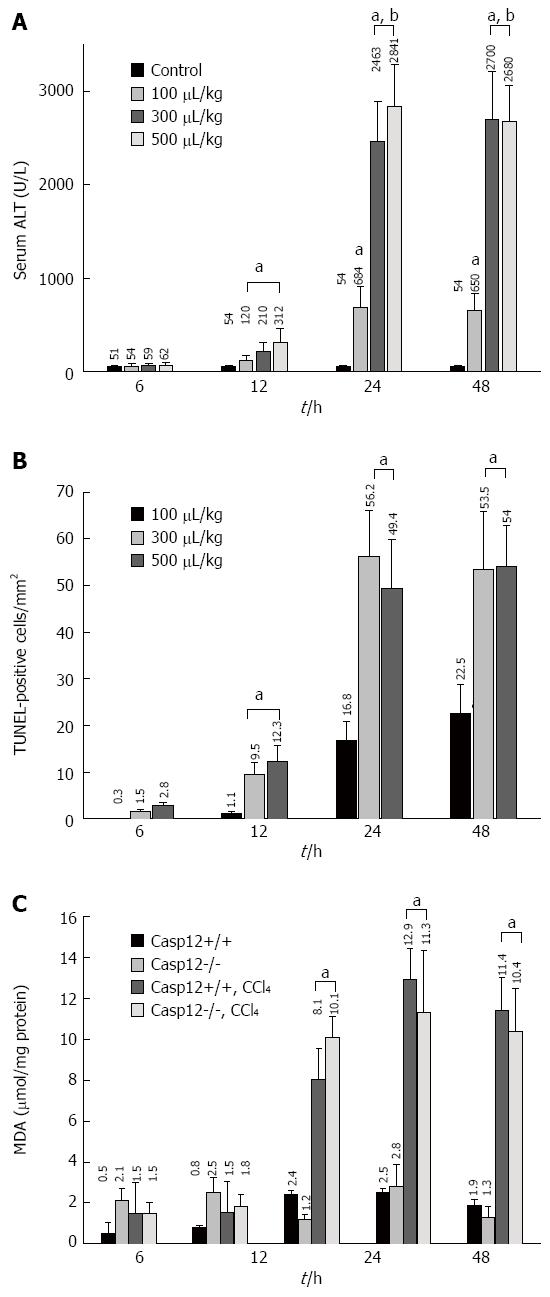Copyright
©2014 Baishideng Publishing Group Inc.
World J Gastroenterol. Dec 28, 2014; 20(48): 18189-18198
Published online Dec 28, 2014. doi: 10.3748/wjg.v20.i48.18189
Published online Dec 28, 2014. doi: 10.3748/wjg.v20.i48.18189
Figure 1 Dose- and time-dependent liver damage, apoptosis and reactive oxygen species generation.
A: Carbon tetrachloride (CCl4)-induced hepatic injury as measured by alanine aminotransferase (ALT) levels. Values are mean ± SE, n = 5, aP < 0.05 vs control, cP < 0.05 vs 12 h at the same dose; B: Hepatic apoptosis was examined by terminal transferase-mediated dUTP nick-end labeling (TUNEL) staining. For each sample, five randomly selected fields at 200× magnification were evaluated. Values are mean ± SE, n = 5; eP < 0.05 vs 100 μL/kg body weight group at the same time point; C: Generation of reactive oxygen species as measured by malondialdehyde (MDA) in both caspase-12+/+ and -12-/- mouse livers 12, 24 and 48 h following CCl4 treatment (300 μL/kg body weight). Values are mean ± SE, n = 8; gP < 0.05 vs controls.
- Citation: Liu H, Wang Z, Nowicki MJ. Caspase-12 mediates carbon tetrachloride-induced hepatocyte apoptosis in mice. World J Gastroenterol 2014; 20(48): 18189-18198
- URL: https://www.wjgnet.com/1007-9327/full/v20/i48/18189.htm
- DOI: https://dx.doi.org/10.3748/wjg.v20.i48.18189









